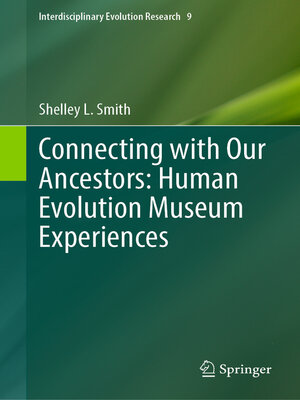Connecting with Our Ancestors
ebook ∣ Human Evolution Museum Experiences · Interdisciplinary Evolution Research
By Shelley L. Smith

Sign up to save your library
With an OverDrive account, you can save your favorite libraries for at-a-glance information about availability. Find out more about OverDrive accounts.
Find this title in Libby, the library reading app by OverDrive.



Search for a digital library with this title
Title found at these libraries:
| Library Name | Distance |
|---|---|
| Loading... |
This book combines documentation and analysis of the contents of exhibits in 12 museums (Part 1) with interviews with experts involved in the creation of exhibits (Part 2) to explore variation in human evolution exhibits.
To be successful, museum exhibits must make a personal connection with visitors, inspiring them to learn more. Human evolution exhibits thus need contemporary relevance. It is crucial to find ways to bind our deep past to our lives today. Presenting our story, and our collective history, some human evolution exhibits reach an audience of millions each year. An understanding of evolution is fundamental to modern biology, and a lack of knowledge of basic principles has practical consequences, including impairing reception of health messages. The goal of the volume is to stimulate discussion of how the presentation of evolution, and in particular human evolution, can be improved, contributing to scientific literacy and engagement with evolutionary science. To enhance relevance to a broader public, the author argues that incorporation of evolutionary medicine and clearer explanations of ancestry and human biological variation are needed.
The surveyed museums include four in Texas, the author's home state, seven additional renowned U.S. museums, and the Natural History Museum in London. Some of the 35 interviewees are prominent academic researchers; other contribute their expertise in design, art, and education. Topics discussed include exhibit content and changing exhibits, the ideal vs. reality in exhibit creation, self-assessments of exhibits, education and "edutainment," and exhibit content intersections with religion, politics, and the history of representations of race / human biological variation. A bibliographic essay, appendices, and text boxes provide additional information for readers desiring more in-depth study.
This volume is of interest to a wide range of readers in anthropology, museum studies, and science communication.







